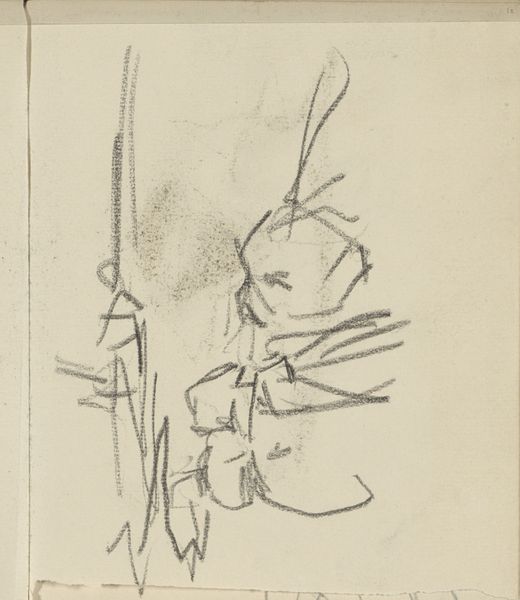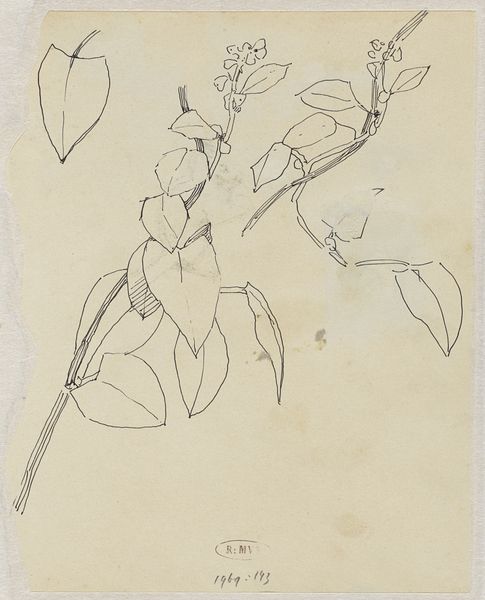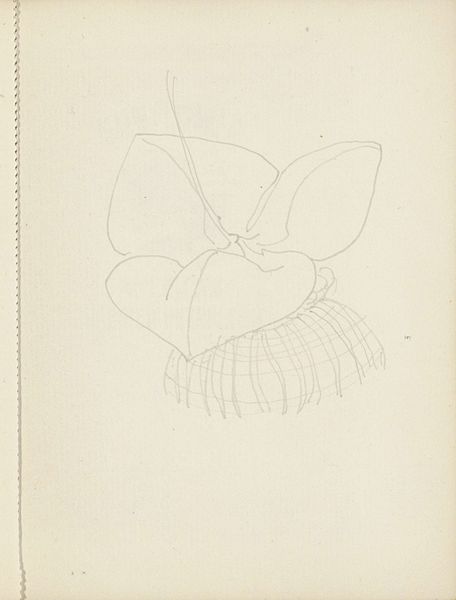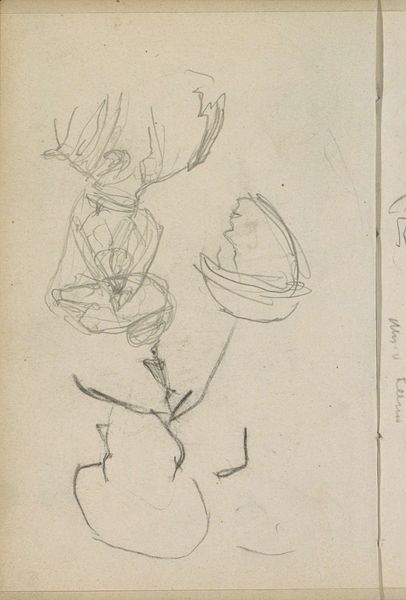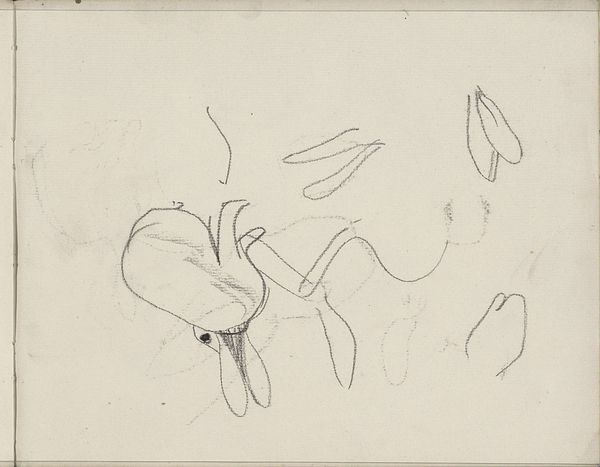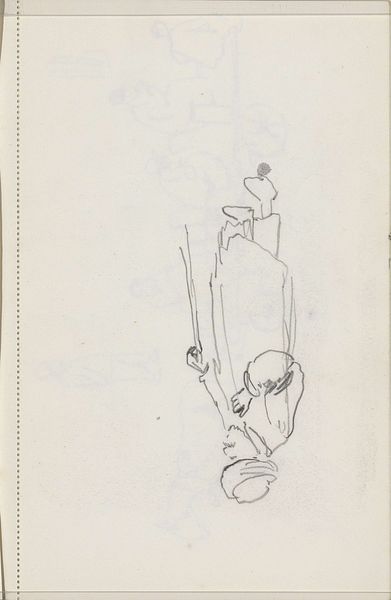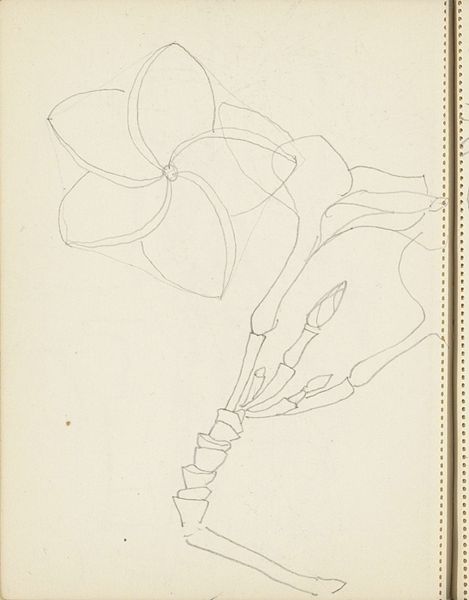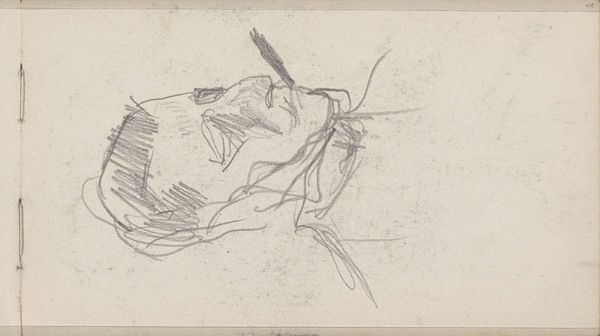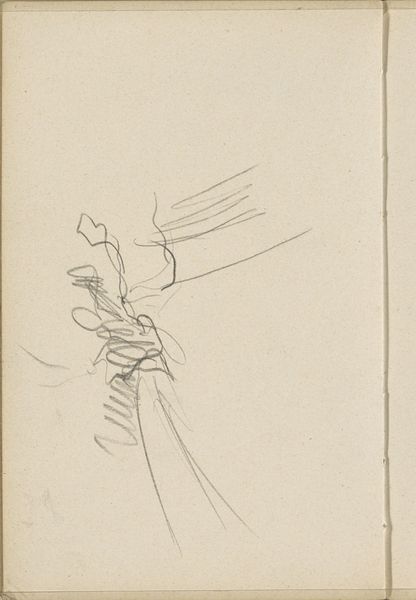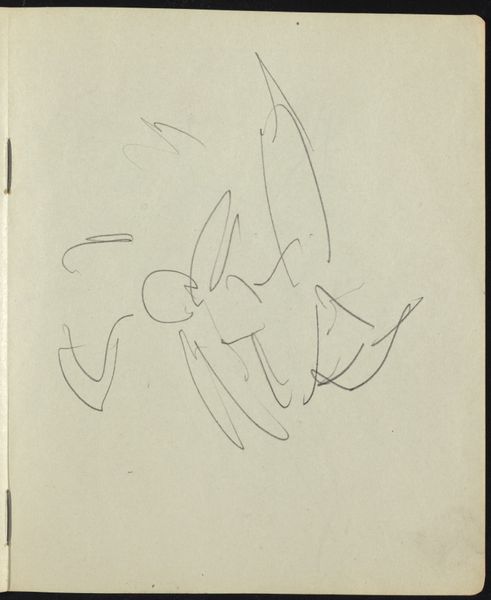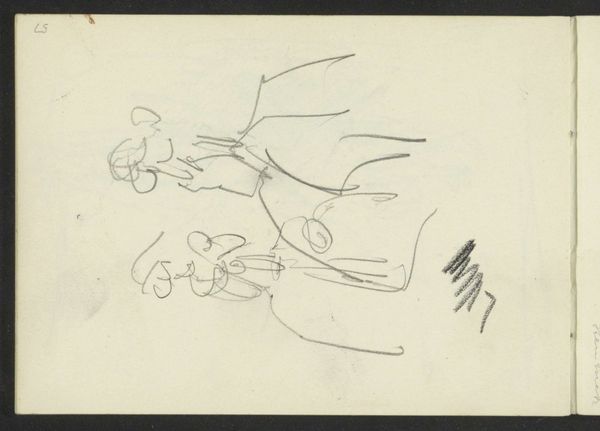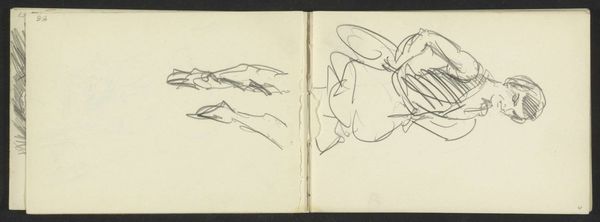
Copyright: Rijks Museum: Open Domain
Curator: This sketch, held in the Rijksmuseum, is called "Twee staande vrouwen," or "Two Standing Women," by Isaac Israels. It's rendered in pencil and falls somewhere between 1875 and 1934. Editor: My initial reaction is… ambiguous. The figures are barely there, just the ghost of a suggestion, a collection of lines on a pale field. It feels unfinished, immediate. Curator: Precisely. Israels, aligned with Impressionism, captured fleeting moments. It's about the impression of form rather than meticulous detail, a break from academic tradition. One must think about the salon system and its rigid expectations when considering this move toward a more liberated portrayal of figures. Editor: Right, the sketch challenges those formal expectations. The figures aren't individualized; their identity almost seems beside the point. The strokes emphasize the universal posture, suggesting women's presence reduced to a form, or shape, existing on paper. I find this really fascinating if one applies the language of feminist theory. Curator: I see your point. Consider this sketch's broader social context. During Israels' time, women's roles were under intense renegotiation. The sketch, even unintentionally, might mirror that era's unsettled ideas about gender roles and representation. Israels engaged frequently with the representation of women within a commercial framework as he often sketched working women, fashion models, and so on. Editor: It is easy to read this as an objective record; however, its value lies more profoundly in its subjective quality, making the artwork a charged site, filled with implications regarding spectatorship and female representation. It is more concerned with form than fact. I'm particularly drawn to that tension— the implied story versus the actual one we see. Curator: Well, art often invites this. The ambiguity we both notice, inherent in the image, permits such dialogues across time and various schools of thought. Editor: It definitely does. These brief suggestive sketches become points of departure. I think Israels achieves this elusive quality of an active space that encourages one to enter in and continue a thought.
Comments
No comments
Be the first to comment and join the conversation on the ultimate creative platform.
